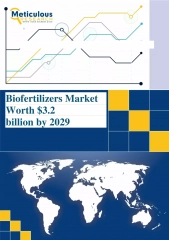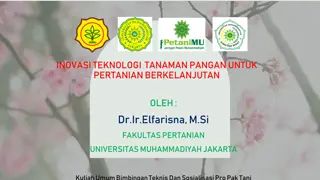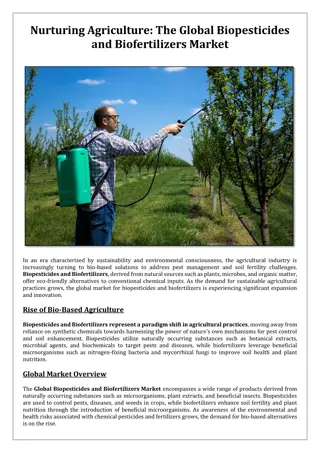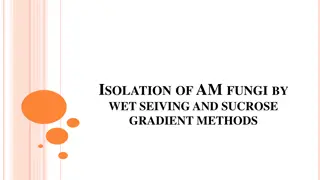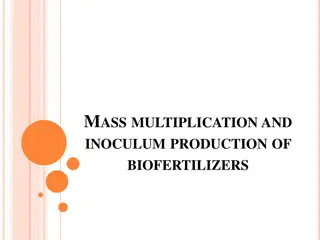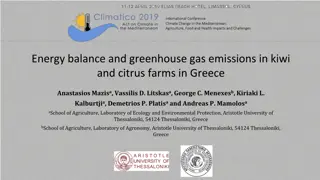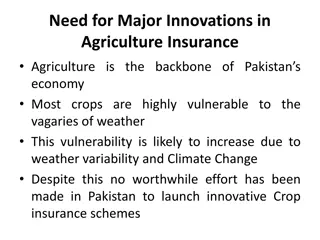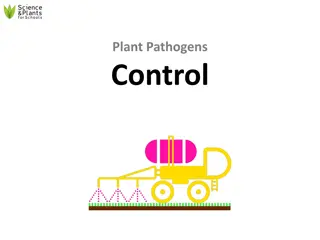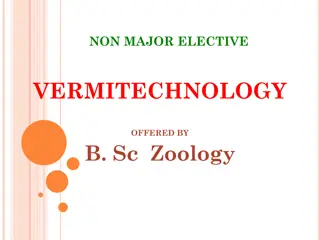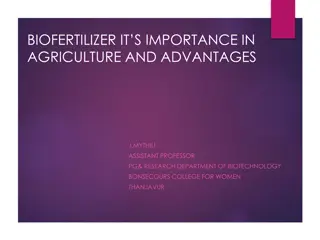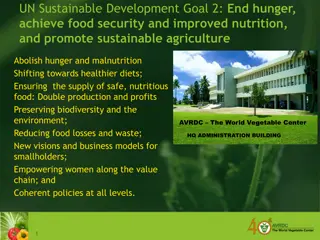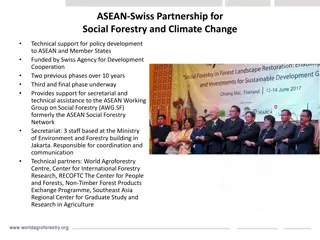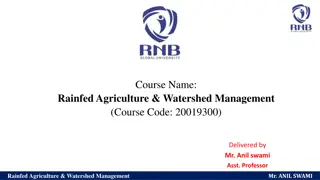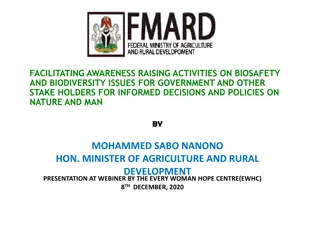Understanding Biofertilizers for Sustainable Agriculture
Biofertilizers, containing living microorganisms, enhance plant growth by improving nutrient availability. This eco-friendly alternative to traditional fertilizers offers promising results, especially in dry environments. Research shows mycorrhizal fungi play a key role in plant health and crop yield. Guidelines for applying biofertilizers are provided, including seed treatment and main field application methods. Despite the potential benefits, challenges exist in biofertilizer technology. Promoting the use of biofertilizers can contribute to sustainable agriculture practices worldwide.
Download Presentation

Please find below an Image/Link to download the presentation.
The content on the website is provided AS IS for your information and personal use only. It may not be sold, licensed, or shared on other websites without obtaining consent from the author. Download presentation by click this link. If you encounter any issues during the download, it is possible that the publisher has removed the file from their server.
E N D
Presentation Transcript
Bioferilizers Komal Pareek
Introduction 'Biofertilizer' is a substance which contains living microorganism which, when applied to seed, plant surfaces, or soil, colonizes the rhizosphere or the interior of the plant and promotes growth by increasing the supply or availability of primary nutrients to the host plant.Biofertilizers are not fertilizers. Fertilizers directly increase soil fertility by adding nutrients. Biofertilizers add nutrients through the natural processes of fixing atmospheric nitrogen, solubilizing Phosphorus, and stimulating plant growth through the synthesis of growth promoting substances. Ancient relationship between fungi and plant roots creates genetic expression that leads to more root growth. Common fungus could one day be used as bio-fertiliser , replacing mined phosphate which is now depleted to the point of impending fertiliser crisis.
Research : Researchers found that plants colonised by mycorrhizal fungi have a different genetic expression which causes the cell walls within crown roots to soften, triggering the growth of many more lateral roots which are able to suck in more nutrients, contributing to a healthier plant with a higher yield. This is in addition to the phosphate provided by the fungal 'hyphae' tendrils, which in effect act as extra roots themselves (in return for which, the fungus gets its carbohydrate from the plant). "Plant roots that have the capacity to explore the widest soil area absorb the most nutrients as a consequence and so are likely to have a greater crop yield. By finding out which parts of the genome are responsible for the best plant root systems we can start breeding for the best root 'architecture'," said Paszkowski. "Designer crops with the best possible root systems will mean greater crop yield, which means more people fed." Rice is best grown in highly irrigated paddy fields, but there are many parts of the world where this isn't an option, and 40% of the world's area for rice crop is grown 'dry'. However, the plant-fungi relationship that creates enhanced crops actually works best in dry environments. Mycorrhizal fungi could be of huge benefit to those who rely on dry rice crops in some of the poorest areas of Asia and sub-Saharan Africa.
How to apply or use Biofertilizers ? 1. Seed treatment One packet of the inoculant is mixed with 200 ml of rice kanji to make a slurry. The seeds required for an acre are mixed in the slurry so as to have a uniform coating of the inoculant over the seeds and then shade dried for 30 minutes. The shade dried seeds should be sown within 24 hours. One packet of the inoculant (200 g) is sufficient to treat 10 kg of seeds. 2. Seedling root dip This method is used for transplanted crops. Two packets of the inoculant is mixed in 40 litres of water. The root portion of the seedlings required for an acre is dipped in the mixture for 5 to 10 minutes and then transplanted. 3. Main field application Four packets of the inoculant is mixed with 20 kgs of dried and powdered farm yard manure and then broadcasted in one acre of main field just before transplanting.
Constraints in Biofertilizer Technology: Though the biofertilizer technology is a low cost, ecofriendly technology, several constraints limit the application or implementation of the technology the constraints may be environmental, technological, infrastructural, financial, human resources, unawareness, quality, marketing, etc. The different constraints in one way or other affecting the technique at production, or marketing or usage. 1. Technological constraints Use of improper, less efficient strains for production. Lack of qualified technical personnel in production units. Production of poor quality inoculants without understanding the basic microbiological techniques Short shelf life of inoculants. 2. Infrastructural constraints Non-availability of suitable facilities for production Lack of essential equipments, power supply, etc. Space availability for laboratory, production, storage, etc. Lack of facility for cold storage of inoculant packets
3. Financial constraints Non-availability of sufficient funds and problems in getting bank loans Less return by sale of products in smaller production units. 4. Environmental constraints Seasonal demand for biofertilizers Simultaneous cropping operations and short span of sowing/planting in a particular locality Soil characteristics like salinity, acidity, drought, water logging, etc. 5. Human resources and quality constraints Lack of technically qualified staff in the production units. Lack of suitable training on the production techniques. Ignorance on the quality of the product by the manufacturer Non-availability of quality specifications and quick quality control methods No regulation or act on the quality of the products Awareness on the technology Unawareness on the benefits of the technology Problem in the adoption of the technology by the farmers due to different methods of inoculation. No visual difference in the crop growth immediately as that of inorganic fertilizers.
Some of fungal biofertilizers available in the market Mycomax Endomycorrhizal inoculant micronized (BEIM) Mycorrhizal Root Dip Bioorganic plus Myke Myke Pro Superzyme
Conclusion The benefits of using fungi as mycofungicides and biofertilizers include decreasing the occurrence of plant diseases by inhibiting the growth of pathogens, suppressing the amount of inocula of pathogens, increasing in uptake of nutrient from the soil or atmosphere, and producing bioactive compounds, hormones and enzymes which stimulate plant growth. These benefits maintain and increase the crop production. There are many commercial mycofungicides and fungal biofertilizers available worldwide. Using mycofungicides and fungal biofertilizers offer more environmentally friendly alternatives than chemical fungicides and chemical fertilizers. There are however, some limitations in using these products. Their success can be affected by environment conditions, while application difficulties, limited shelf life, and slow action as compared to chemical products may discourage farmers to utilize them. Research on the development of mycofungicides and fungal biofertilizers needs to be carried out so that more effective products are produced.



